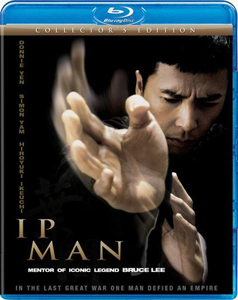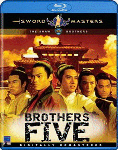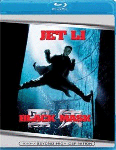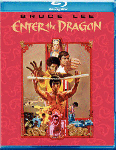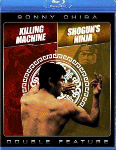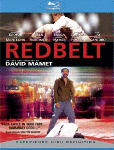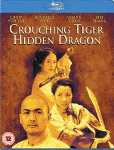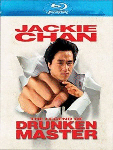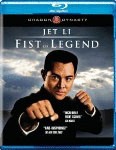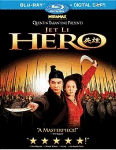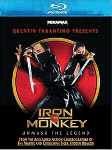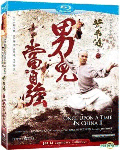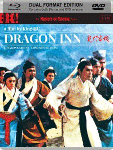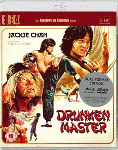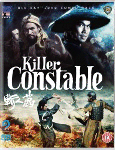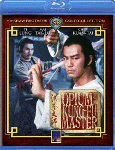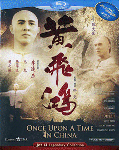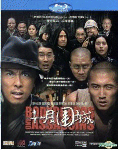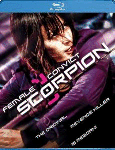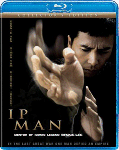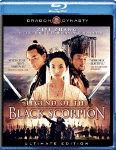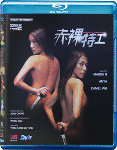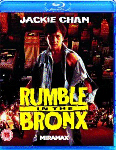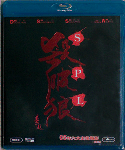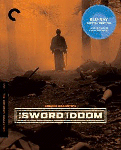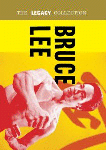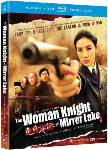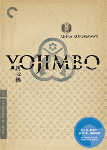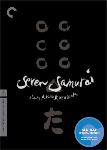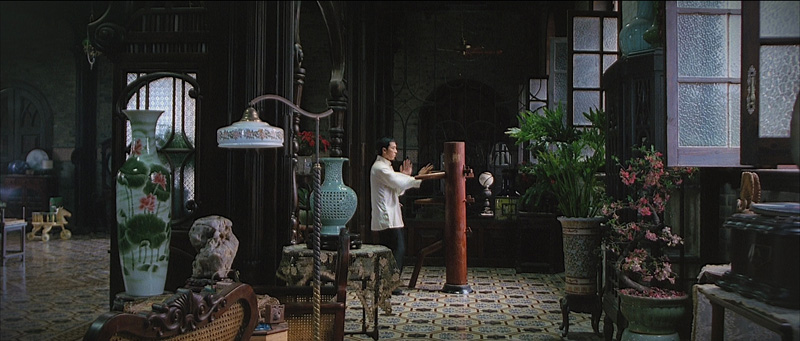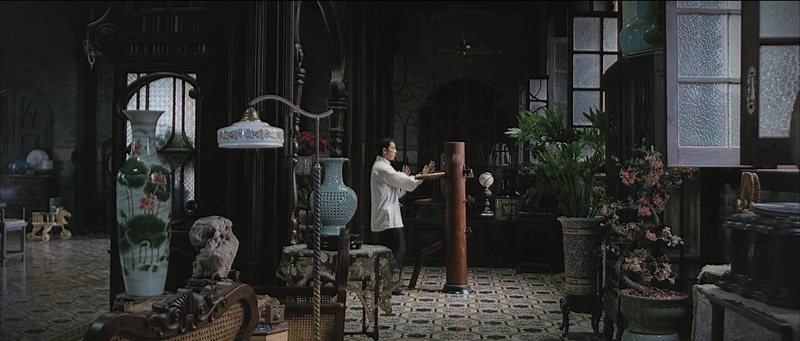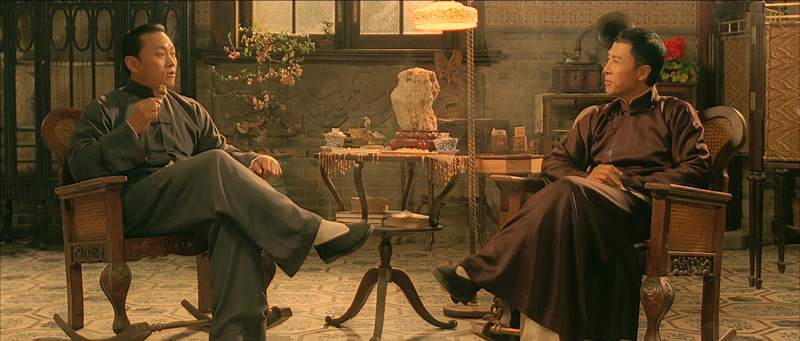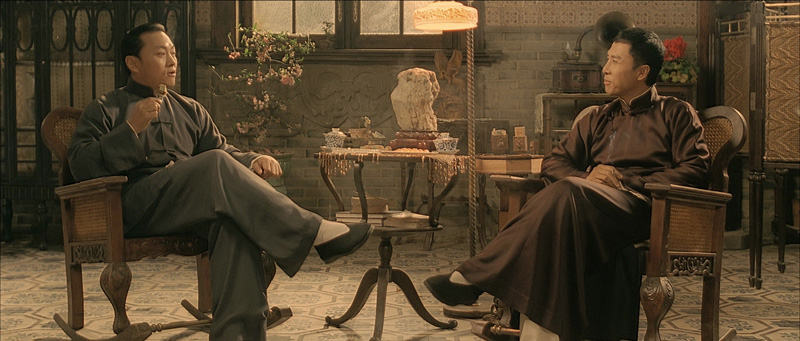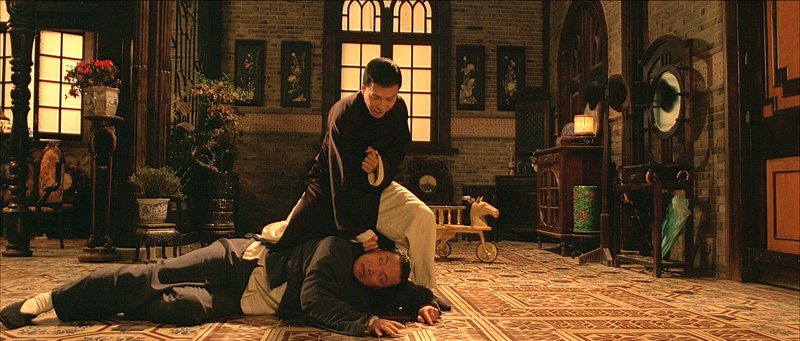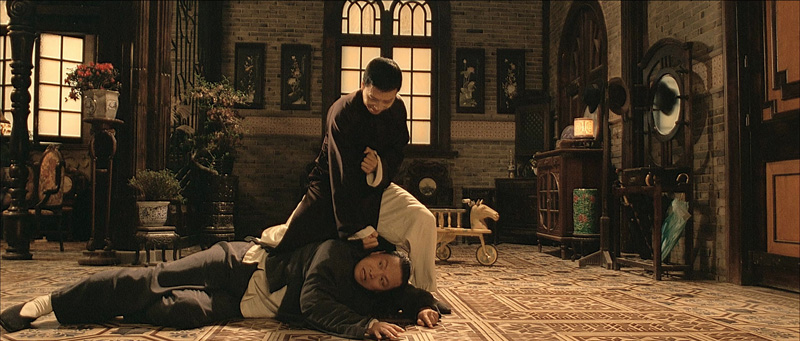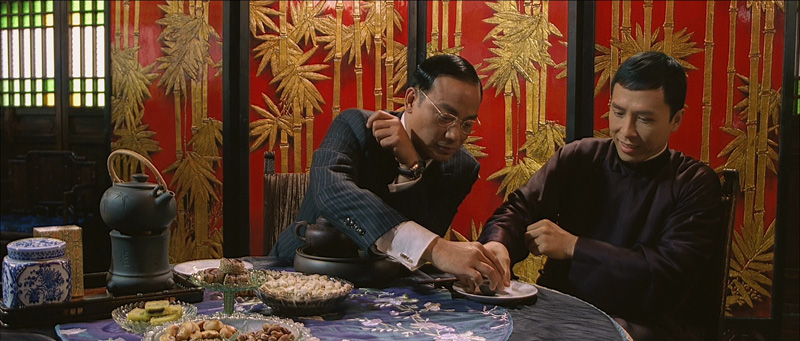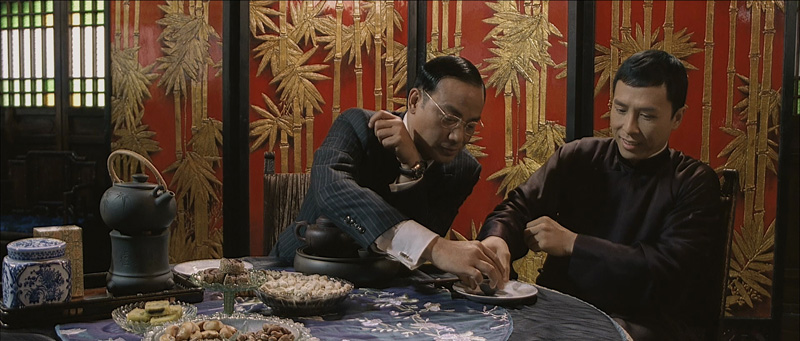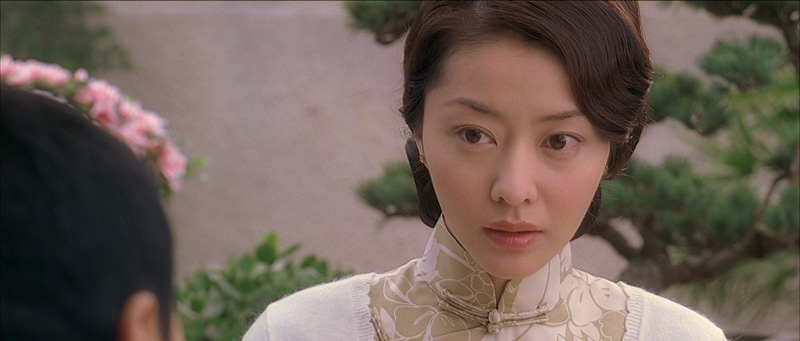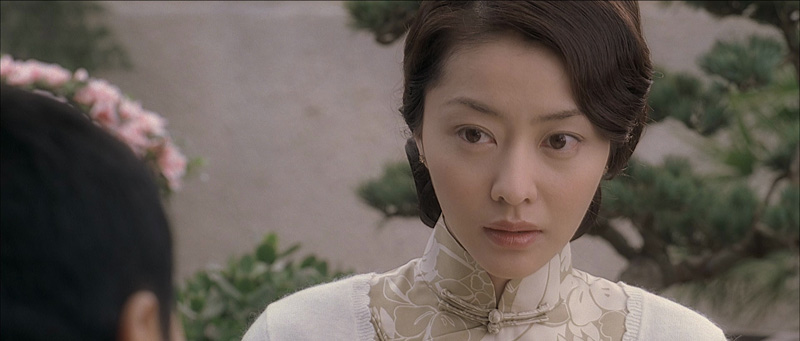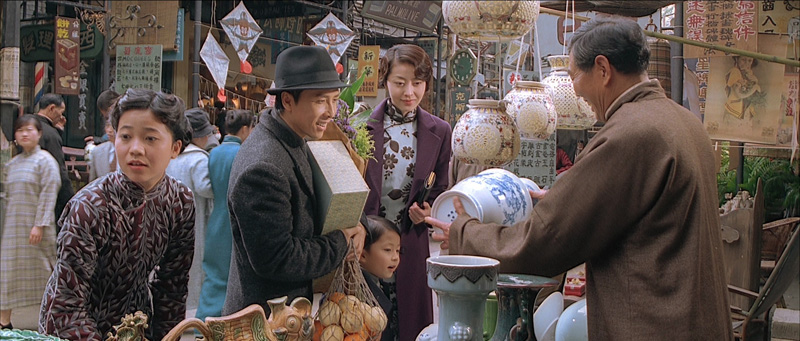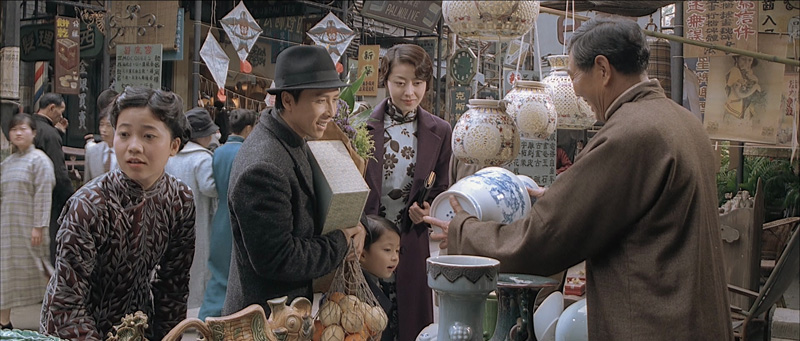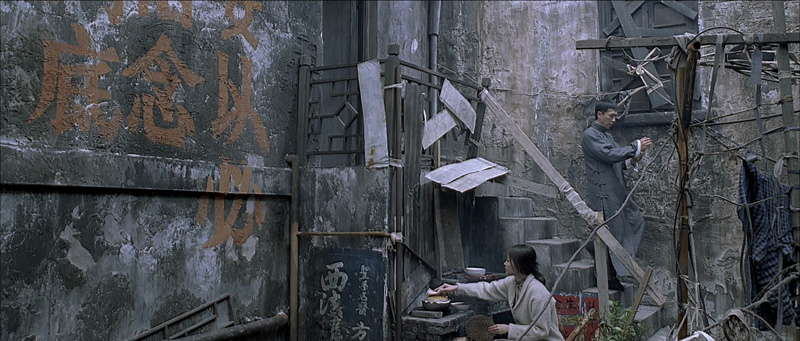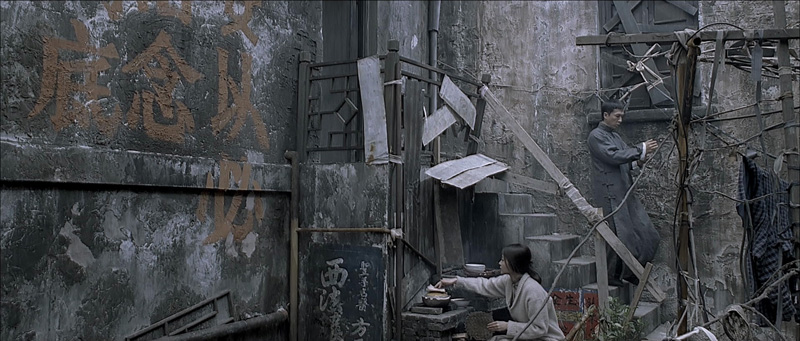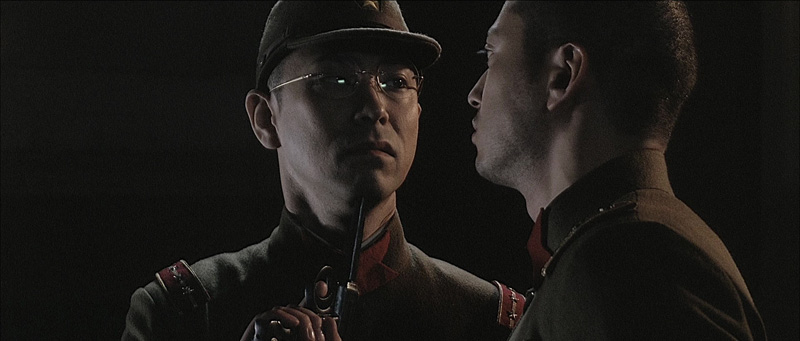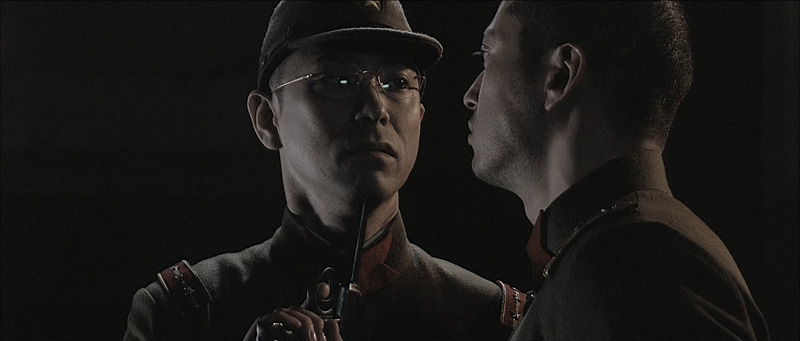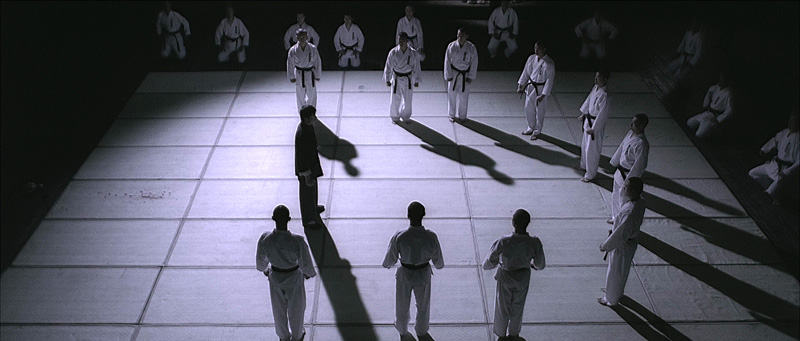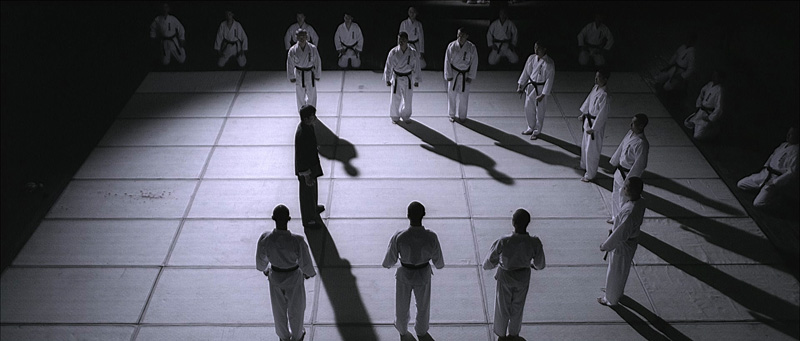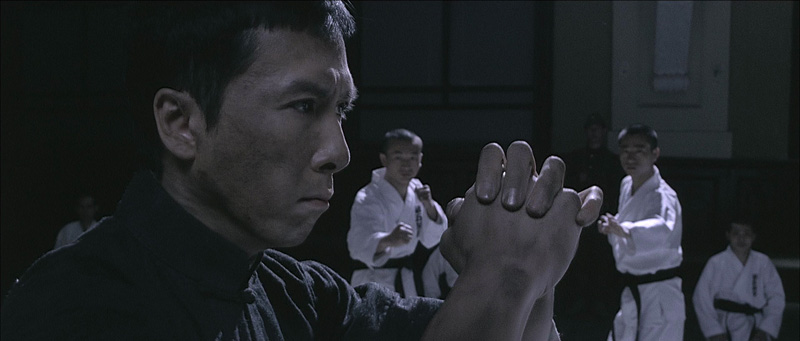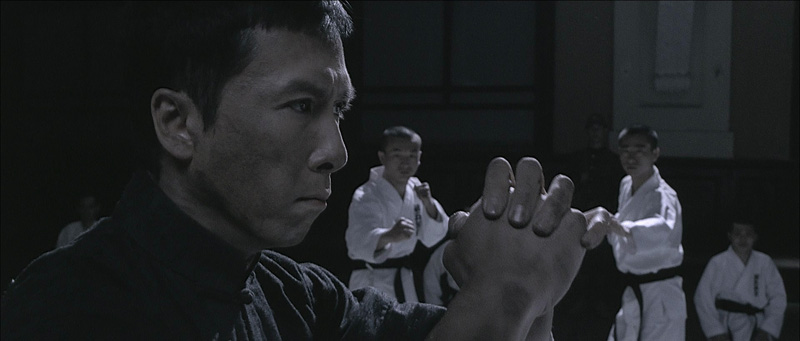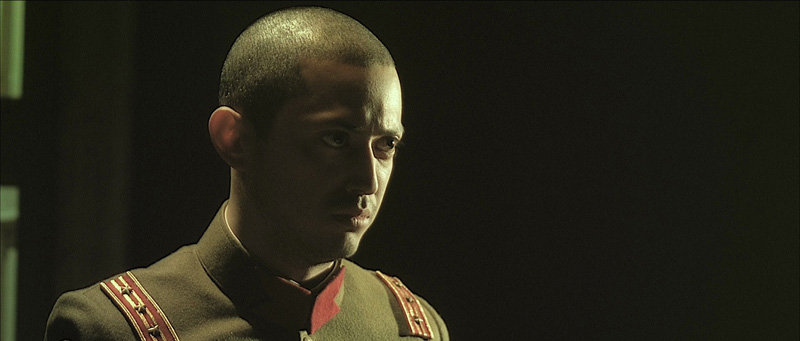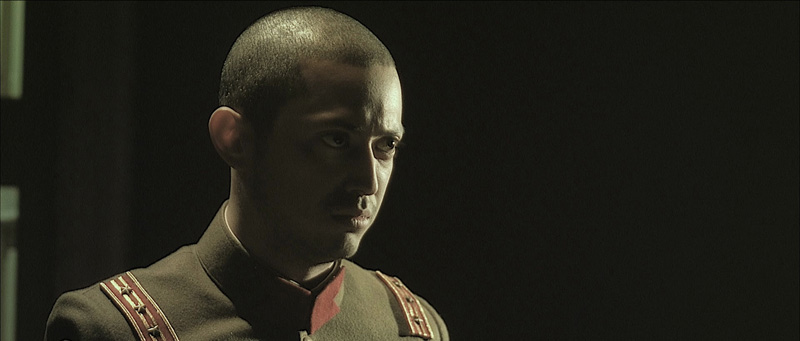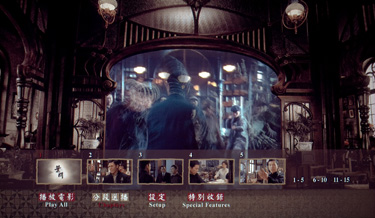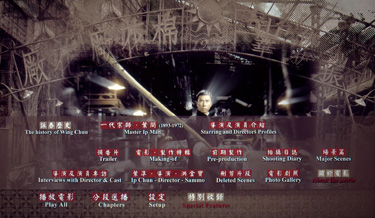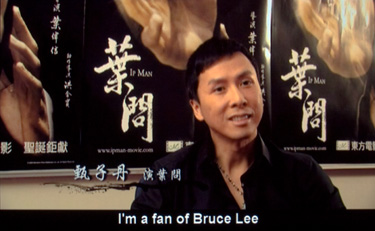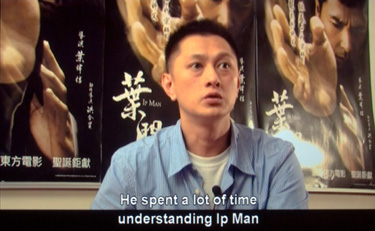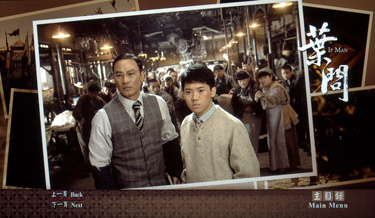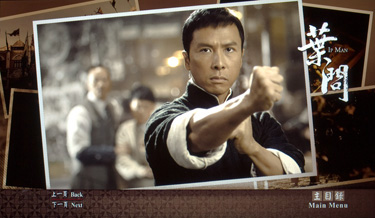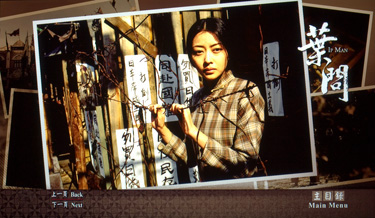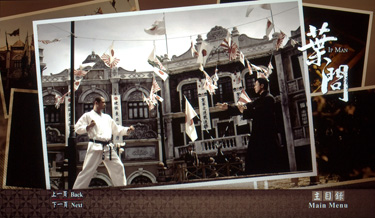|
Ip Man
[Blu-ray]
(Wilson Yip, 2008)
Universe Laser &
Video Co. (HK)
Blu-ray
LEFT vs.
Well Go 2-disc (USA)
Blu-ray
RIGHT
|
More
Shaw Brothers-Martial Arts-Wushu or related films on
Blu-ray
reviewed (click review buttons to also see
comparisons where applicable): |
Review by Leonard Norwitz
Studio:
Theatrical: Mandarin Films
Blu-ray: Universe Laser & Video Co. (HK) vs.
Well Go 2-disc (USA)
Disc:
Region: A
Runtime:
1:46:21
Size: both are dual-layered
Case: Standard Blu-ray case (both)
Release date: February 13th, 2009 /
Release date: July 29th, 2010
Video (both):
Aspect ratio: 2.35:1
Resolution: 1080p
Video codec: AVC
Audio:
Cantonese LPCM 7.1; Cantonese DTS-HD Master Audio 7.1;
Cantonese Dolby TrueHD 7.1; Mandarin DTS-HD Master Audio
7.1; Mandarin Dolby Digital 5.1
English DTS-HD Master Audio 5.1
Cantonese DTS-HD Master Audio 5.1
Mnadarin DTS-HD Master Audio 5.1
Subtitles:
Feature & Bonus: Traditional Chinese, English, none
English, None
Extras:
• The Making of Ip Man (18:37)
• PreProduction (2:02)
• Shooting Diary (3:27)
• Main Sets (2:24 + 2:01 + 2:04)
• Interviews with Director & Cast (Yip: 23:12 + Sammo 8:03)
+ Donnie 22:09 + Simon 2:53 + Ikeyuchi 7:45 + Ka-Tung 8:56 +
Fan 4:49 + Ip Chun 3:27)
• Deleted Scenes (4:45)
• History of Wing Chun (Chinese text only)
• Ip Man – The Master (Chinese text only)
• Photo Gallery
• Trailer
Extras:
• The Making of Ip Man - in HD (18:33)
• Deleted Scenes - in HD (3:19)
• U.S. and Original Hong Kong Trailers - in HD
• Trailers for White Wall and 9th Company - in HD
• On DVD (Disc 2):
• Interviews with Director & Cast (about 69 min.)
• Shooting Diary (5:27)
• Behind the Sets (2:23 + 2:00 + 2:03)
The Film:
8
Given the cast and director, my
expectations ran high for this movie.
Four luminaries from Wilson Yip’s SPL:
Sha Po Lang reunited for this biopic of
one China's most famous martial artists:
Director Yip, actors Donnie Yen (in the
title role) and Simon Yam (in a
supporting role), and the always
impressive Sammo Hung – here working
behind the camera as fight
choreographer. Ip Man is, in a number of
ways, a throwback to martial arts movies
from the time of Bruce Lee – not
coincidentally, since Ip Man was Bruce
Lee's wing chun teacher. There is the
familiar town with competing martial
arts schools, each headed by its own
master; the bully (Fan Sui Wong) who
comes to town to set up his own school,
but not before he humiliates the various
school masters by giving each a brutal
thrashing; and there is the quiet master
whom everyone in town knows is the best
but who heads no school of his own.
This would be Ip Man, a gentleman among
men. Self-effacing, but confident. He is
also quite well off and lives with his
lovely wife (Lynn Xiong) and young son.
Mrs Ip is given to looks of disapproval
every time her husband finds an excuse
to fight, even though he never gets
hurt. He even tries to make sure that
the house furniture is not damaged when
he fights in his house. This is movie
not without a sense of humor – for the
first half-hour or so anyhow.
But lightness turns bitter and grey when
the Japanese come to Foshan at the
leading edge of what would become the
Second World War. As the population
shrinks from 300,000 to 70,000 we assume
that not all of the difference are made
up of refugees. Ip's residence has been
consigned as the Japanese headquarters
and Ip and his family are now among the
homeless. It's very hard for him to
swallow his pride and try to find work,
which he finally does after pawning all
the remaining family trinkets.
The Japanese general assigned to this
town (Hiroyuki Ikeuchi) is another sort
of gentleman altogether. It is his fancy
to round up those men desperate enough
to fight his men in an arena. If one of
these miserable people should live
through it he gets a bag of rice. If he
fails to demonstrate the proper
humility, he may have to fight the
general, who is an amazing piece of work
in his own right. One thing though: the
general doesn't appreciate it when his
officers take matters into their own
hands and kill off his subjects in the
arena. Killing is for the streets.
Well, we can see where this is all
going. Donnie Yen seems tailor made for
the role of Ip Man – proud, assured, and
confidently kick-ass in his newly
learned wing chun kung fu skills. But
even more than another excuse for Donnie
Yen to show off his stuff is the
unabashed pride that the Chinese take in
the way this story unfolds, even though
it may be liberally fictionalized. I
don't expect that Western audiences
would find the story quite as engrossing
for this reason, even though its themes
are not unfamiliar. It is not so much of
a stretch to see in Ip Man echoes of
High Noon or Destry Rides Again – the
idea of a lone man who only fights when
provoked beyond endurance, and then he
takes his six-shooters out of mothballs
and courageously stands to face his
fate.
|
NOTE:
The below
Blu-ray
captures were taken directly from the
Blu-ray
disc.
Image (Universe):
6/8
The first number indicates a relative level of excellence
compared to other Blu-ray video discs on a ten-point scale.
The second number places this image along the full range of
DVD and Blu-ray discs.
I suspect that the transfer is an accurate representation of
the director's intentions, which appear to be that once the
Japanese arrive, the picture is drained of much of its
color, it’s flatter and at times grainier. We can understand
such a design as a metaphor for social/political/emotional
consequences of the occupation - if only it were applied
more consistently.
We note that in the “free China period” (quotes mine) some
scenes, mostly indoors, have an extra gold filtered layer.
In these scenes, sometimes the image appears oversaturated,
at other times it is thin and insubstantial. Yet there are
many other scenes that have a naturally delicate,
reach-out-and-touch-it quality to them. Once the Japanese
enter the picture the image becomes more consistently
desaturated, though not always. The choices are puzzling.
I found few distressing concerns with the transfer: most
artifacts and noise reduction are kept at bay. Some closeups
of Donnie strike me as smoother than they should be. Edge
enhancement shows up in noticeable doses when edges are in
strong contrast, such as in the arena where the Japanese
stage their fights with unsuspecting Chinese.
Image (WellGo):
5/8
The first number indicates a relative
level of excellence compared to other
Blu-ray video discs on a ten-point
scale. The second number places this
image along the full range of DVD and
Blu-ray discs.
When I first watched the Universe
Blu-ray edition at home I confess I had
inadvertently set my projector’s color
and contrast higher than they should
have been, and drew negative conclusions
about the differences between the first
and second parts of the movie, feeling
them to be arbitrary and tiresome. But
on second viewing, with correct
projection settings and a more forgiving
attitude about the vagaries of the
medium (viz., the entire signal path +
the viewing environment), I am more
accepting of the choices made in this
regard, though there still remain some
puzzling filtration choices here and
there.
The Well Go is a different story. It is
as if Well Go applied a consistent
desaturating filter to the Universe
Blu-ray. Now there is less apparent
difference between the pre- and
post-Japanese invasion scenes, made even
less different on large screen front
projection (as compared to smaller
displays.) This observation, the fact
that it makes the same edge enhancement
mistakes, and the fact that Well Go, for
a change, has given us a true 1080p
image, tells most of the story and
should satisfy. But I can’t resist a few
subjective remarks:
In part it may be that I’m just tired of
desaturating filtration as a style. I
ask myself, why not just go the extra
yard, make it black and white, and get
it over with! Then there would only be
contrast, grain and exposure to play
with. Works for me. However,
desaturating a color movie is not the
same thing as having filmed it black and
white to start with. Among other
reasons, lighting is differently
considered in order to manipulate
contrast for the desired effect.
Since the Well Go and Universe Blu-rays
are, aside from saturation, more similar
than not, we wonder about original
intent, in the absence of which the
choice becomes one of taste – and that
rankles the critic in me. My caps of the
Universe reveal a couple of scenes that
are excruciatingly oversaturated, and
this “mistake” is “corrected” in the
Well Go. But since the Well Go applies
the same correction uniformly
throughout, the rest of the movie
suffers arbitrarily. I want there to be
some absolute answers to these
questions. We might ask: what about
comparing these Blu-rays with the
theatrical experience? Unhappily, such
comparisons vary with the size and
nature of the display even when
optimally calibrated - not that the film
is handy to begin with.
So, you would think, this leaves
transfer issues – however, in this case
they are much the same for both
editions. And when I look at the
comparative screen caps for differences
in sharpness, resolution or DNR, I don’t
believe I see any. The pre-Japanese caps
have more life in the Universe because
there is more color and for the most
part that sits better with me. But what
I cannot confidently account for on
technical grounds is why the Universe
should always feel more visually
involving, even in the relatively
desaturated occupation scenes. It would
appear that desaturating the image, at
least the way Well Go goes about it,
flattens dimensionality which, in turn,
makes for a less involving experience.
But there is another matter that relates
to mass, substance, weight. The Universe
has it, the Well Go doesn’t, especially
in the earlier part of the movie. In a
side by side comparison of the moving
picture (less so, frame captures) we
readily feel the difference in
everything from clothing, to furniture
to flooring. Well Go’s desaturation has
also resulted in a thinning of the the
image - this despite its stronger bit
rate (28.00 Mbps vs the Universe’s
25.15). This is too bad, really, since I
appreciated what I felt was too much
color in some scenes on the original
Universe edition.
I suspect that the Well Go is, for the
most part, a desaturated version of the
Universe rather than vice-versa, since
those scenes that have color are
rendered naturally and beautifully, and
I don’t think you can get the same
result by “colorizing” an image that was
processed with less color for theatrical
purposes.
As with the Universe edition, I found no
distressing concerns with the transfer:
most artifacts and noise reduction are
kept at bay. Edge enhancement shows up
in noticeable doses, and in the same way
as the Universe, where edges are in
strong contrast, such as in the arena
where the Japanese stage their fights
with unsuspecting Chinese.
|
CLICK EACH
BLU-RAY
CAPTURE TO SEE ALL IMAGES IN FULL 1920X1080 RESOLUTION
Universe Laser & Video Co. (HK)
Blu-ray
TOP vs. Well Go 2-disc (USA)
Blu-ray
BOTTOM
Universe Laser & Video Co. (HK)
Blu-ray
TOP vs.
Well Go 2-disc (USA)
Blu-ray
BOTTOM
Universe Laser &
Video Co. (HK)
Blu-ray
TOP vs.
Well Go 2-disc (USA)
Blu-ray
BOTTOM
|
Universe Laser &
Video Co. (HK)
Blu-ray
TOP vs.
Well Go 2-disc (USA)
Blu-ray
BOTTOM
|
Universe Laser &
Video Co. (HK)
Blu-ray
TOP vs.
Well Go 2-disc (USA)
Blu-ray
BOTTOM
|
Universe Laser &
Video Co. (HK)
Blu-ray
TOP vs.
Well Go 2-disc (USA)
Blu-ray
BOTTOM
|
Universe Laser &
Video Co. (HK)
Blu-ray
TOP vs.
Well Go 2-disc (USA)
Blu-ray
BOTTOM
|
Universe Laser & Video Co. (HK)
Blu-ray
TOP vs.
Well Go 2-disc (USA)
Blu-ray
BOTTOM
Universe Laser &
Video Co. (HK)
Blu-ray
TOP vs.
Well Go 2-disc (USA)
Blu-ray
BOTTOM
|
Universe Laser &
Video Co. (HK)
Blu-ray
TOP vs.
Well Go 2-disc (USA)
Blu-ray
BOTTOM
|
Universe Laser &
Video Co. (HK)
Blu-ray
TOP vs.
Well Go 2-disc (USA)
Blu-ray
BOTTOM
|
|
Audio & Music:
5/7
Dialogue is disproportionately subdued compared to action
sequences, whose combined effects and music makes for an
uncomfortable imbalance. I found it helpful to ride the
gain. Once I found an acceptable, if strained balance for
dialogue and action sequences, the sound was clear enough
and had plenty of crunch in the fights. There is even some
intentionally amusing flights of artistic license,
especially during the duel in Ip’s house with rival tough
guy, Jin Shanzhao, but elsewhere the attention is so much on
the foreground that the environment is almost entirely
ignored. One good example is the scene where Ip visits his
friend’s cotton mill: the dialogue is loud and clear
compared to the muted sounds of the factory a few paces
behind the speakers. The effect is unsettling simply because
it’s hard to make sense of it. I might mention here that the
looped dialogue, regardless of the mix chosen, is never in
sync.
Audio & Music:
5/7
The Universe lossless audio mixes are rendered in 7.1; the
Well Go’s English and Chinese tracks are uncompressed 5.1.
Channel balance is therefore subtly different if you have
only 5.1 playback. The dialogue-to-effects discrepancy noted
on the Universe still obtains. And, for some reason, Well Go
sets the overall gain noticeably higher. I didn’t spend much
time with the English dub - enough to assure myself that it
was not a total loss and that the effects and music are less
dynamic compared to the Chinese 5.1 mix.
Operations:
5
Ip Man is quick to load, without promotional theatrical or
video previews. The non-expanding chapter thumbnails aren't
very large, nor do they have titles, but they're easy enough
to make sense of. All of the menu functions have English
subtitles. The one real complaint with the menu is the lack
of Play All functions for the eight cast Interviews of from
3-23 minutes each or the several related making-of segments.
The English translation was pretty much error-free and
idiomatic. The white subtitles for the feature film remain
outside the image in the letterbox border area.
Operations:
5
Unlike the Universe menu, Well Go displays large chapter
thumbnails when clicked on, however, my OPPO was unable to
go to a chapter if Scene Selection was accessed while the
feature was playing. The menu functions are more
English-friendly than the Universe, though that edition did
display English as well as Chinese. While there is still no
Play All function for the eight Cast Interviews of from 3-23
minutes each we can move to the next segment by way of the
chapter advance on the remote, which we could not do on the
Hong Kong Blu-ray. For some reason this handy option is not
available for the Behind the Scenes segment. The English
translation, which appears to be much the same as the
Universe edition, is pretty much error-free and idiomatic.
Extras:
7
All of the extra features are shown in non-anamorphic,
letterboxed 480p. They are of variable, but generally decent
quality, and all of them, except the two that are Chinese
text only, have English subtitles – that's over two hours of
subtitled bonus material – a real plus.
Extras:
7
Most of the bonus features found on the Universe single
dual-layered disc are to be found on the new Well Go, minus
the two Chinese text-only features (History of Wing Chun &
Ip Man – The Master), which weren’t subtitled on the Hong
Kong release anyway. The features are organized differently,
with the Making-of segment, the Deleted Scenes, and the
various trailers retained on the Blu-ray disc, and the
remaining features on a separate DVD. The Making-of piece
has been bumped up to a screen filling high definition
(video & audio) presentation, as are, remarkably, the
Deleted Scenes, which are still crowded with distracting
elements, making them nearly unwatchable. As for the
interviews on the DVD, they are presented in a widescreen
letterboxed format (as they were on the Universe) however,
they are horizontally stretched - just enough to notice,
though I doubt many viewers will be disturbed by it.
Universe Menus
Bottom line:
7
While not at all a Thumbs Down, and despite the excellence
of the movie, I find I can't really get very enthusiastic
about this Blu-ray. As I said earlier, the image might be
faithful, but it's not one that wears very well in the
medium (the latter part of the movie once the Japanese
enter, I thought fared better.) The fact that audio levels
are unbalanced doesn't help. All of this leaves the movie
and the presence of Donnie Yen and a couple of amazing fight
sequences, brilliantly staged by Sammo Hung, on which to
hang our hopes.
Bottom line:
7
The advantage to the Well Go is it’s English dub. While
hardly to be preferred to the original Cantonese, it is
bearable and will serve well enough for those who can’t
tolerate subtitles. While the Universe is Region A locked, I
have as yet been unable to determine the region coding for
the Well Go. The Well Go has the edge in their presentation
of the Extra Features, though they do omit a few items
present on the Universe. The Well Go image is consistently
less saturated, and choice might come down to a matter of
taste, though I feel that the Universe is closer to the
“truth.” Audio for the Chinese tracks is comparable.
Leonard Norwitz
March 20th, 2009
July 24th, 2010
|
More
Shaw Brothers-Martial Arts-Wushu or related films on
Blu-ray
reviewed (click review buttons to also see
comparisons where applicable): |
|
![]()
![]()

![]()
![]()
![]()
![]()

![]()
![]()


